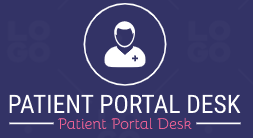In the era of digital health, patient portals play a crucial role in enhancing the healthcare experience by providing convenient access to medical information, scheduling appointments, and facilitating communication with healthcare providers. Rebound Patient Portal is a user-friendly platform that empowers patients to take control of their healthcare journey. In this article, we will guide you through the step-by-step process of logging into the Rebound Patient Portal, ensuring a seamless and efficient healthcare experience.
Here are login steps for Rebound Patient Portal Login
- Visit the Rebound Hospital website.
- Go to the patient portal section.
- Click on the “Log In” or “Sign In” button.
- Enter your username or registered email address in the designated field.
- Type your password in the password field.
- Click on the “Log In” or “Sign In” button.
How to Sign Up for Rebound Patient Portal
If you are a new user and want to sign up for the Rebound Patient Portal, follow these steps:
- Go to the Rebound Hospital website.
- Locate the patient portal section.
- Look for the “Sign Up” or “Register” button and click on it.
- Fill in the required information, such as your name, date of birth, contact details, and any other requested information.
- Create a unique username and password for your account. Make sure to choose a strong password for security.
- Agree to the terms and conditions of using the patient portal.
- Complete the registration process by following any additional prompts or instructions provided.
How to Reset Password or Username for the Rebound Patient Portal
If you forget your password or username for the Rebound Patient Portal, follow the steps below:
To Reset Password:
- Go to the patient portal login page.
- Look for the “Forgot Password” or “Reset Password” link and click on it.
- Enter your registered email address or username in the provided field.
- Follow the instructions sent to your email to reset your password.
- Create a new password, following any requirements or guidelines provided.
- Once you have successfully reset your password, you can log in to the patient portal using your new credentials.
Step 1: Updating Personal Information
To ensure that your healthcare providers have the most accurate and up-to-date information, navigate to the “Profile” or “Account Settings” section. Here, you can update your contact details, insurance information, and any other relevant personal information. Keeping this information current is essential for effective communication and accurate healthcare management.
Step 2: Setting Preferences
Customize your Rebound Patient Portal experience by exploring the preferences or settings section. Here, you can choose notification preferences, set communication preferences, and configure other settings that align with your preferences and needs.
Step 3: Security Measures
Maintaining the security of your healthcare information is paramount. Be sure to log out of the Rebound Patient Portal when you have completed your session, especially when using a shared computer. Additionally, consider enabling two-factor authentication if the portal offers this feature, adding an extra layer of security to your account.
Step 4: Troubleshooting and Support
If you encounter any difficulties during the login process or while navigating the Rebound Patient Portal, look for the “Help” or “Support” section. Many portals provide helpful resources, FAQs, and contact information for technical support. Don’t hesitate to reach out for assistance to ensure a smooth and frustration-free experience.
Conclusion
The Rebound Patient Portal is a valuable tool that empowers patients to actively participate in their healthcare journey. By following these step-by-step instructions, you can seamlessly navigate the portal, access your medical information, and engage with your healthcare providers. Embracing the digital era of healthcare not only enhances convenience but also promotes a more collaborative and informed approach to managing your well-being.
